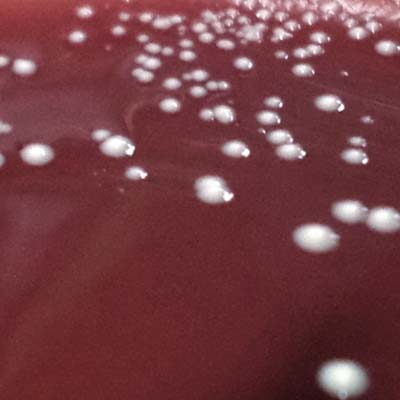
Get A Testing Quote
Propionibacterium acnes
Structure and Physiology
This bacteria is a Gram-positive, rod shaped, aerotolerant anaerobe. Slow growing and aerotolerant, this microorganism is part of the normal flora of healthy human skin, living deep inside pores and follicles.
Transmission and Disease
Excess sebum (oil) production due to overactive sebaceous glands or blockage of a follicle can cause this bacterium to multiply. P. acnes releases digestive enzymes to break down sebum and aquire nutrients, which can sometimes destabilize the cell walls in the follicle. The rapid growth of these organisms in the follicle can trigger an immune response.
Disinfection
P. acnes is susceptible to a wide range of antimicrobial compounds and chemicals making it relevant when testing antimicrobial efficacy of substances.
Notes
Healthy pores and follicles of the human skin are normally populated by only P. acnes, while unhealthy and damaged pores may be more susceptible to infection from opportunistic skin pathogens.
Reference
- Kim, Jenny. “Review of the innate immune response in acne vulgaris: activation of Toll-like receptor 2 in acne triggers inflammatory cytokine responses.” Dermatology 211.3 (2005): 193-198.
Share

